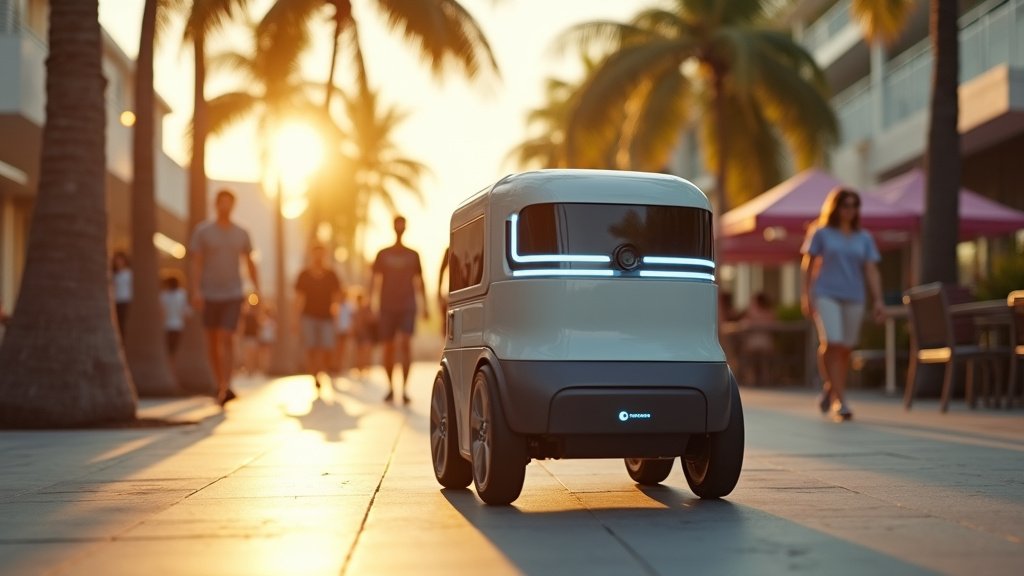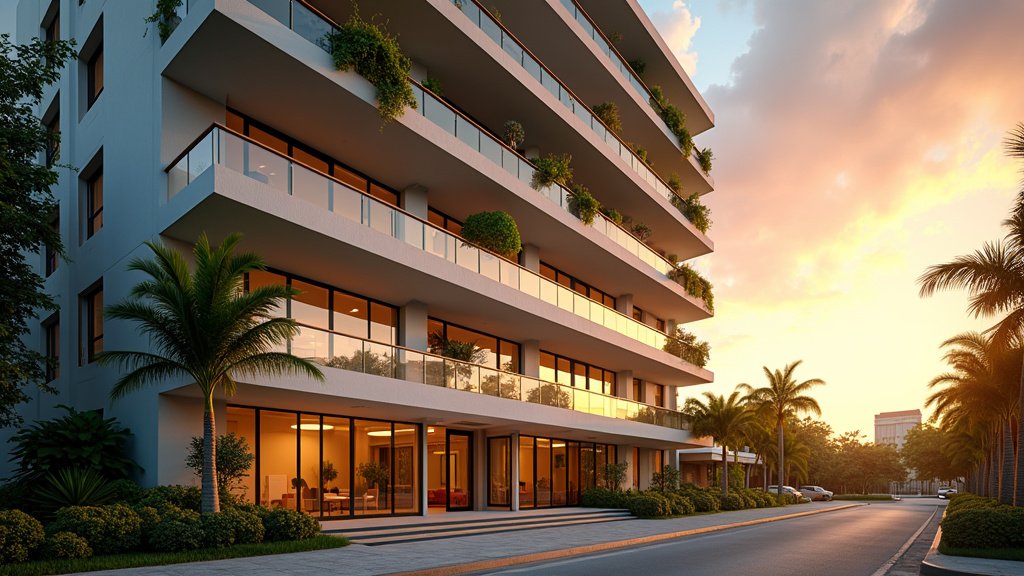MIAMI BEACH, FL – As autonomous delivery robots increasingly navigate urban landscapes, Miami Beach is pioneering legislation to establish clear operational protocols, aiming to balance technological innovation with the unique challenges of its densely populated coastal environment. This news comes as companies like Serve Robotics are actively expanding their services in the Miami metro area, bringing the future of delivery to city sidewalks.
The Dawn of Automated Deliveries
The proliferation of delivery robots is a trending phenomenon across the United States, promising greater efficiency and reduced environmental impact for last-mile logistics. Serve Robotics, a leading autonomous sidewalk delivery company, recently announced its expansion into the Miami metropolitan area, including Miami Beach and the Brickell neighborhood. The company, which partners with popular eateries like Shake Shack and Mister O1 Extraordinary Pizza, is utilizing the Uber Eats platform for its deliveries. This move marks Serve Robotics’ first East Coast market and is part of a larger strategy to deploy up to 2,000 delivery robots across various U.S. cities by the end of 2025.
These sidewalk robots are designed to be compact, typically resembling small coolers, and are intended to navigate pedestrian areas, transporting goods from local businesses directly to consumers. Their presence is expected by proponents to alleviate traffic congestion and lower emissions, offering a sustainable alternative to traditional delivery vehicles.
Miami Beach Tackles Sidewalk Congestion
While the technological advancements are exciting, they also present regulatory hurdles, particularly in a city like Miami Beach. Known for its narrow sidewalks and heavy pedestrian traffic, the city is proactively addressing concerns about robots potentially obstructing pathways, creating tripping hazards, and causing visual distractions. In response, Miami Beach commissioners have been focused on establishing specific protocols for these autonomous couriers.
Commissioner Kristen Rosen Gonzalez, who is sponsoring the legislation, highlighted the issues, noting that the robots can “take up our real estate, kind of like any sidewalk cafe, and sometimes they’re idling for long amounts of time”. To mitigate these problems, the proposed rules include a strict limit on how long robots can remain stationary. Initially, discussions centered on a 30-minute idling limit, but a revised proposal suggests a maximum of five minutes of idle time during the day. A more extended idling period of up to 30 minutes may be permitted in the evening, coinciding with when the robots are scheduled for pick-up, charging, and servicing.
Navigating Florida’s Regulatory Landscape
Miami Beach’s legislative effort is informed by existing state law. Florida statutes, specifically Section 316.2071, permit the operation of Personal Delivery Devices (PDDs) and mobile carriers on sidewalks and crosswalks. However, the law explicitly allows local governments to implement additional regulations focused on safe operation. This state-level framework empowers cities like Miami Beach to tailor rules to their specific urban conditions.
Florida has had laws governing PDDs since 2017, establishing parameters such as electric power, a weight limit (under 80 pounds excluding cargo), a maximum speed of 10 miles per hour, and the requirement for human monitoring or control. These devices must also yield to pedestrians and cannot operate on public highways except to cross streets. The legislation aims to strike a balance, ensuring that these devices can operate while prioritizing pedestrian safety and accessibility.
Groundbreaking Legislation for a New Era
Miami Beach’s initiative is being hailed as groundbreaking, with Commissioner Rosen Gonzalez stating, “We’re the first city in the state of Florida to pass anything whatsoever regulating the robots”. This proactive stance underscores the city’s commitment to managing the integration of new technologies responsibly.
The city’s memo accompanying the legislation details the unique public safety and mobility concerns arising from the operation of PDDs in a “densely populated coastal community with narrow sidewalks, heavy pedestrian traffic”. The proposed protocols are designed to ensure that while technology advances, the quality of life for residents and visitors remains paramount.
The Road Ahead for Robot Deliveries
The proposed regulations have seen commissioners delving into specifics, such as the noise emissions from the robots, indicating a thorough review process. While discussions have been ongoing, with talks continued to a later date, the anticipated final vote signals Miami Beach’s determination to establish a clear framework for autonomous delivery operations. The city is not alone in exploring this frontier; Miami-Dade County itself previously hosted a pilot program with Kiwibot, and Uber Eats has a history of partnering with robot delivery companies in the region, such as Cartken in 2022.
As Serve Robotics and other companies continue to deploy their fleets, Miami Beach’s regulatory decisions will be closely watched. This news reflects a broader trend of cities grappling with how to integrate autonomous technology safely and effectively, ensuring that urban spaces remain accessible and enjoyable for everyone. The successful implementation of these protocols could serve as a model for other municipalities as delivery robots become an increasingly common sight on our streets.





